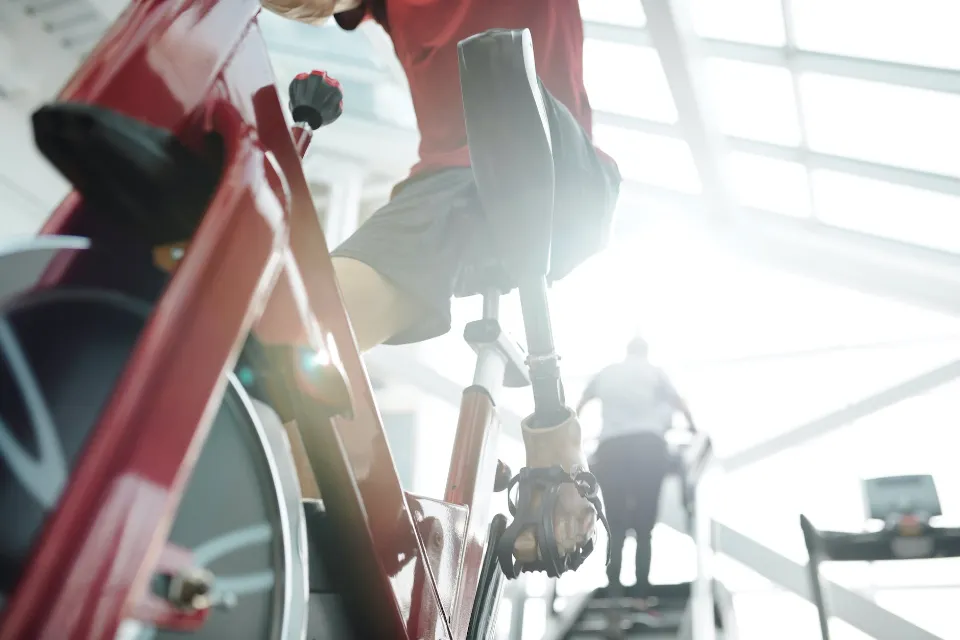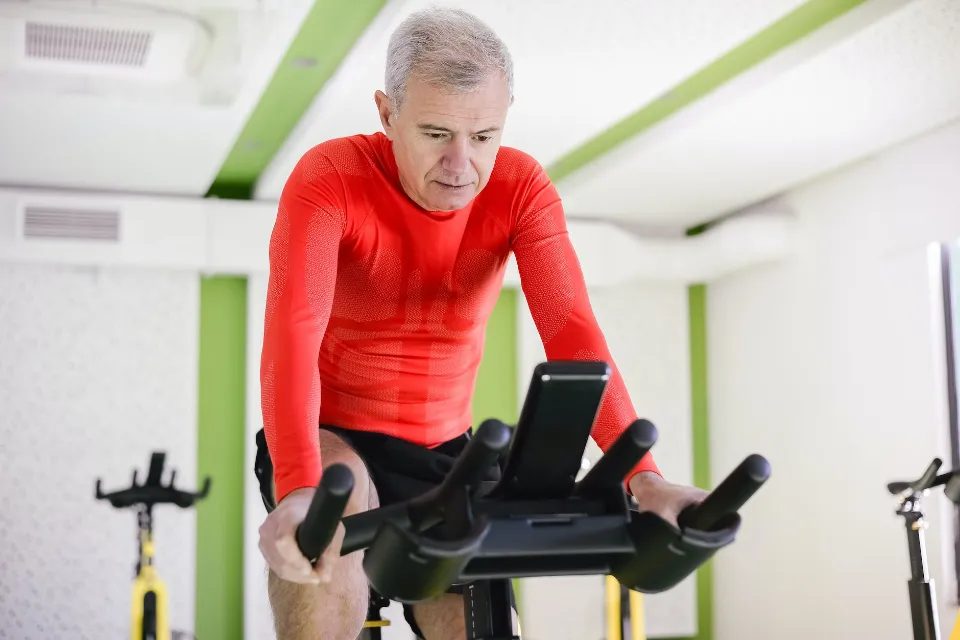Your heart, lungs, and muscles will all be strengthened while riding a stationary exercise bike, which is an efficient and effective way to burn calories and body fat. A stationary bike is less strenuous on your joints than other cardio machines while still giving you a great cardio workout.
When more resistance is used, riding a stationary bike can strengthen the legs and lower body. Pedaling can help to build stronger leg muscles like the quadriceps, hamstrings, and calves.
We’ll go over which muscles a stationary bike works and which exercise routines are best for gaining muscle and burning calories.
The Advantages of a Stationary Bike?
Help With Weight Loss
You can burn more than 600 calories an hour using a stationary bike workout, depending on your body weight and the intensity of your workout. This makes indoor cycling a great exercise choice for quickly burning calories. The secret to losing weight is to burn more calories than you take in.
Strengthens Body Muscles
The lower body and legs can gain strength from stationary bike riding, especially if you use a higher resistance setting.
Your quadriceps, hamstrings, and calves can gain strength from pedaling. The muscles in your back, glutes, and core can also be worked out by it.
You can exercise the muscles in your upper body, such as your biceps, triceps, and shoulders if you ride a bicycle with handles.

Give a Low-impact Workout
A low-impact exercise that uses smooth motions to strengthen bones and joints without placing a lot of strain on them is a stationary bike workout. For those who have joint problems or injuries, it makes for a good workout option.
Running, jogging, jumping, or engaging in other high-impact aerobic exercises can cause significant stress to your ankles, knees, hips, and other joints.
A stationary bike is kinder to your joints because your feet don’t have to lift off the pedals, but it still offers a demanding and powerful workout.
Burns Body Fat
Working out at a high intensity helps to burn calories and build strength, which, in turn, can lead to fat loss.
A 2010 study found that indoor cycling, combined with a low-calorie diet, was effective in reducing body weight and body fat in the study’s participants. Additionally, it reduced triglyceride and cholesterol levels well. For 12 weeks, the participants cycled for 45 minutes, three times per week, while taking in 1,200 calories daily.
What Muscles Does a Stationary Bike Work?
There are four main muscle groups in the legs:
- Quadriceps – the muscles in the front of the thigh above the knee
- Hamstrings – the muscles in the back of the thigh between the hip and knee
- Calves – the muscles in the back part of the lower leg between the knee and ankle
- Glutes – the largest and strongest muscles of the body, also known as hips or butt
All of these muscle groups are used to complete the full pedal stroke as you push the pedal down and then pull it back up. During the entire pedal stroke, the quads and hamstrings will still be active. When you increase resistance, pace, and movement in and out of the saddle after you’ve warmed up, you’ll make these muscles burn even more.
Upper Body Muscles
- The abdominal muscles or abs ensure the posture and the balance of the pelvis and the spine.
- The back muscles, the quadratus lumborum muscle and iliopsoas (in yellow on the diagram), also help to maintain your position and support the spine.
- The biceps and triceps, muscles from the front and back of the arms, allow you to hold the handlebars. When you tighten the handlebars, particularly when sprinting or when you are riding out of the saddle with high resistance, the arm muscles (shown in green on the diagram), which are involved in the movement, become more active.
When you are pedaling out of the saddle with high resistance, you put more pressure on your arm muscles (biceps and triceps) and on the muscles of the lower back while your thigh muscles (quadriceps) and your buttocks work less because you are using the weight of your whole body to cycle and thus your legs have less effort to provide.

Lower Body Muscles
- The quadriceps and the hamstrings, muscles of the front and the back of the thigh, are constantly working while you are pedaling.
- The gluteal muscles or glutes (large, medium and small buttocks), also called glutes, are also working out when you are pushing the pedals.
- The calf muscles, called triceps sural, are located at the back of the leg.
When you exercise on your stationary bike, the lower limb muscles (shown in red on the diagram) are primarily in use. In addition to your legs, thighs, calves, and buttocks, your upper limb muscles are also active, albeit to a lesser degree.
Heart Muscles
Your health and body will benefit greatly from having a strong arm, leg, and core muscles, but your heart muscles are the most important. The exercise bike undoubtedly works the heart muscle, which is an organ that is primarily made of muscle. Your heart will beat more vigorously and quickly while you are exercising on the bike to keep up with the effort.
Over time, this cardio exercise will make your heart muscles stronger and even help your heart do its job better when you’re off the bike. More blood will be pumped through the body as a result of these muscles being stronger. All of this is super beneficial to your overall health.
Reminders
To stay safe with a stationary bike workout, keep these tips in mind:
- Always maintain proper form and posture when moving your body. If you’re unsure of the right position or correct form, ask a certified personal trainer for help.
- If you experience any pain or muscle aches after cycling, stop and give your body some time to heal.
- When cycling in a group class, especially, don’t push yourself past your personal limits. Do not feel pressured to follow the group. Overextending yourself can be risky, particularly if you’re new to exercise.
- Talk to your doctor if you have issues with your balance, blood pressure, or heart health to make sure a stationary bike workout is safe for you.
Conclusion
Exercise on a stationary bike will strengthen your legs, tone your arms, and work your core and back. It will also improve your cardiovascular system. While engaging in a low-impact exercise that is safe for your joints, you’ll gain all of these advantages. Whether you use equipment such as an indoor bike or not, it’s important to know the muscles you use in any type of workout to ensure you’re using the right muscles and using them correctly while maintaining proper form.
FAQs
Can a Stationary Bike Burn Belly Fat?
Yes, cycling can help lose belly fat, but it will take time. A recent study found that regular cycling may help to promote a healthy weight and increase overall fat loss. Cycling (indoors or outdoors) and other moderate-intensity aerobic exercises are good for reducing belly fat and belly circumference.
Are 30 Minutes on Stationary Bike Enough?
Depending on your health goals and the intensity of your workout, 30 minutes on a stationary bike can be enough to improve your fitness and lose weight. Adults should aim for a minimum of 150 minutes of moderate-intensity aerobic exercise per week to reduce the risk of lifestyle diseases like cardiovascular disease.



